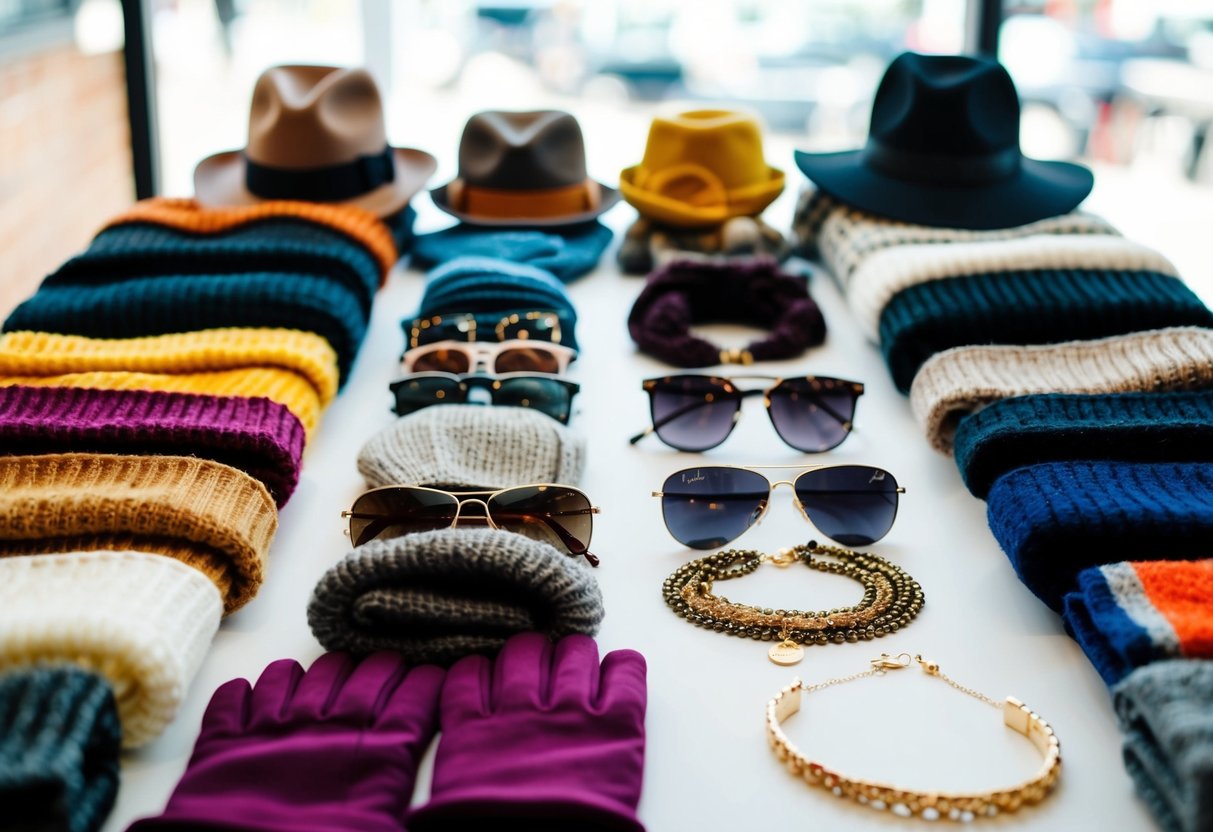Mastering the Art of Layering: Accessory Combinations for All Seasons
Seasonal Layering Strategies

The art of layering changes with each season, allowing one to adapt to temperature shifts while achieving a stylish look. Key aspects include using lighter fabrics in spring and focusing on breathable materials in summer. Autumn involves combining warmth with style, while winter demands insulation and coziness.
Light Layers for Spring
Spring invites changeable weather. Using a mix of fabrics helps manage both warm and cool days effectively. Cotton shirts paired with light cardigans create balance. Denim jackets offer a trendy option for layering over t-shirts. Lightweight scarves add both warmth and a pop of color without becoming overwhelming.
Experimentation with textures can elevate outfits. Incorporating linen pants or skirts can provide comfort. Meanwhile, layering a trench coat or raincoat over attire helps manage unexpected showers. Key to spring layering is combining pieces that can be easily added or removed as temperatures fluctuate. Control over one’s comfort and style in spring is achieved through thoughtful options and versatile choices.
Summer Layering Techniques
Summer requires a balance between style and comfort. The focus here is on breathable materials like cotton and linen to stay cool. Loose-fitting tops often complement sleeveless dresses or tanks, providing casual elegance. Lightweight kimonos or vests can serve as chic outer layers without trapping heat.
Colors in pale shades or fabrics with cooling technology help maintain comfort. Choose clothing items that can be layered easily, such as open-front cardigans or short-sleeved shirts. Accessories such as hats and sunglasses offer additional protection from the sun while completing the look. Strategic use of layers ensures versatility amidst rising temperatures.
Autumn Layering Essentials
Autumn is perfect for mixing layers that add warmth without bulk. A base of long-sleeved tops or turtlenecks provides a foundation for other layers. Adding flannel or wool pieces establishes warmth. Blazers or lightweight coats offer structure without feeling heavy.
Knitwear like sweaters and cardigans introduces texture. Bold colors and patterns bring a unique flair, while scarves enhance both function and style. Opting for layers that are easy to rearrange ensures adaptability in fluctuating temperatures. This season encourages creative combinations that reflect personal style while accommodating cooler weather.
Winter Layering for Maximum Warmth
Winter demands practical layering solutions for warmth and comfort. Thermal tops serve as a base to hold heat, while wool sweaters provide essential insulation. Coats made from heavy materials like down or wool are crucial for outdoor activities.
Layering with turtlenecks under sweaters amplifies protection from the cold. Chunky knit scarves and hats contribute warmth and can be stylish additions to any outfit. Opt for boots and thick socks to keep feet warm. Deliberate choices in combining textures and fabrics ensure layers not only insulate but also reflect a put-together appearance, despite the chill.
Color Coordination and Layering
Choosing the right colors is essential for effectively layering outfits. Proper color coordination ensures that each layer complements the others, creating visually appealing and cohesive looks.
Understanding Color Schemes
Color schemes play a pivotal role in constructing layered outfits. One widely used system is the color wheel, where analogous and complementary colors offer valuable guidance. Analogous colors sit next to each other on the wheel, promoting harmony. Examples include blue with green or red with orange. Complementary colors are directly opposite on the wheel, offering vibrant contrast; think of blue paired with orange or yellow with purple.
Seasons impact color choices as well. Spring and summer often feature lighter hues like pastel pinks or pale blues, while fall and winter lean toward richer tones like burgundy or deep green. Understanding these schemes allows individuals to skillfully coordinate accessories and clothing, ensuring layers enhance each other visually. Applying color theory can transform an outfit from average to striking.



